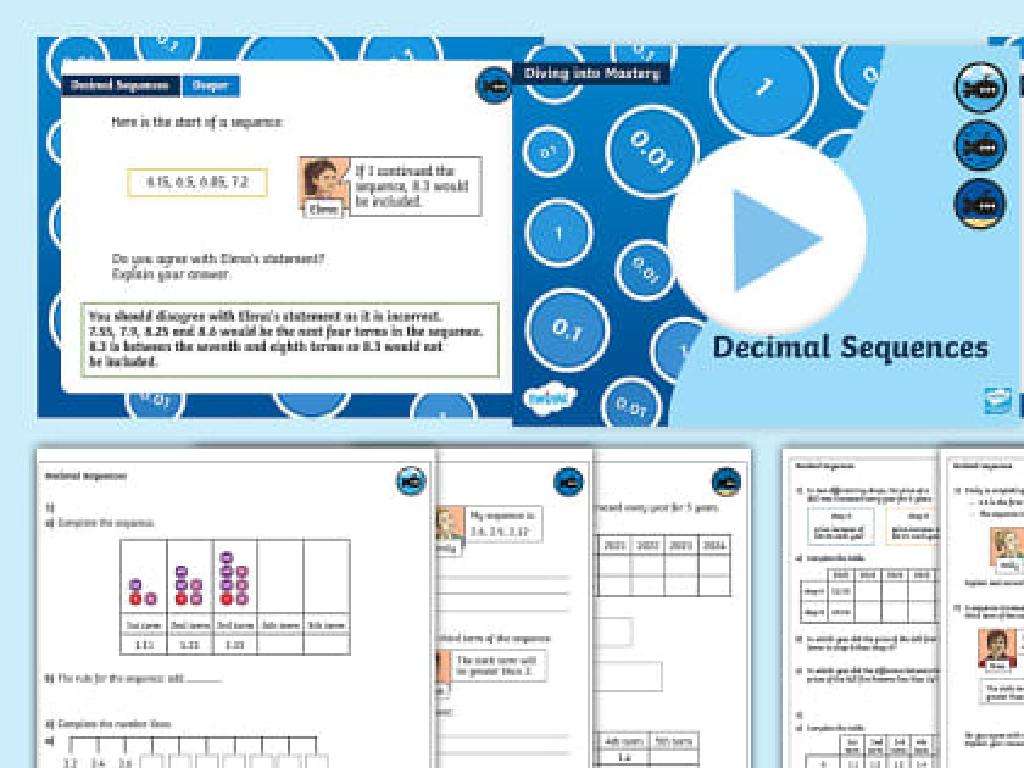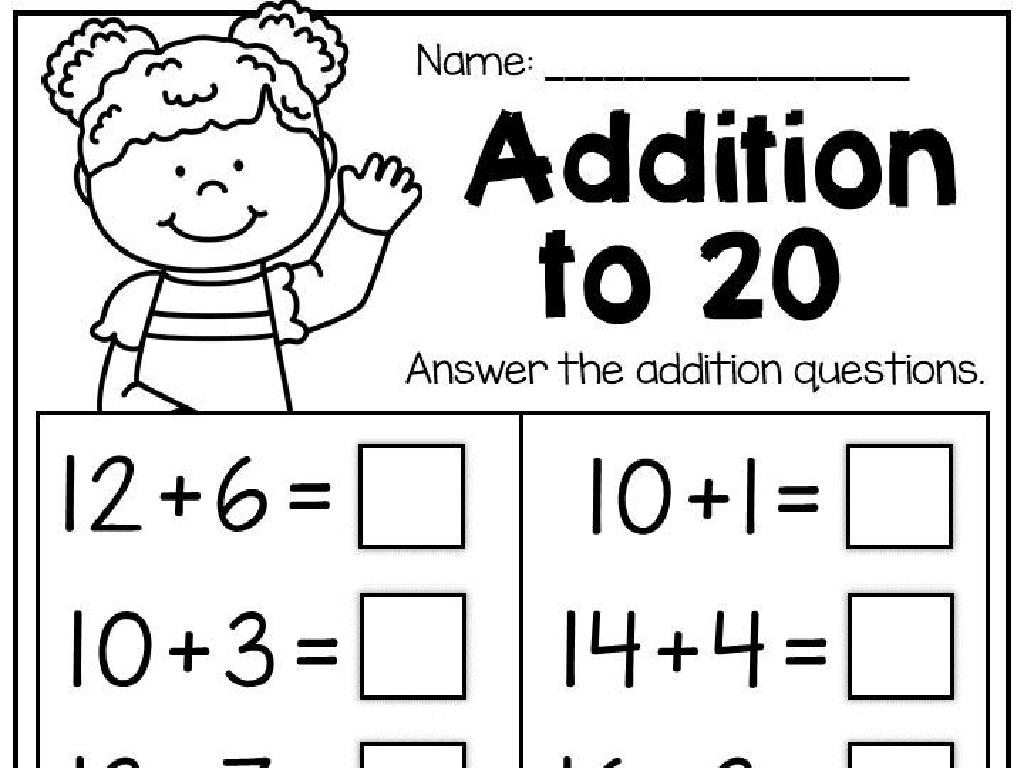Other Topics In Health And Medicine
Subject: Science
Grade: High school
Topic: Health & Medicine
Please LOG IN to download the presentation. Access is available to registered users only.
View More Content
Exploring Health and Medicine
– Significance of health in our lives
– Today’s focus: Varied Health and Medicine topics
– Impact of medical advancements
– Innovations like vaccines and antibiotics have transformed healthcare.
– Examples of medical progress
– Consider the eradication of smallpox or the use of MRI technology.
|
This slide introduces students to the broad and critical field of health and medicine. Begin by discussing why health is a fundamental aspect of our lives, affecting our ability to function and thrive. Transition to the specific topics that will be covered in today’s lesson, which fall under the umbrella of ‘Other Topics in Health and Medicine.’ Highlight how advancements in medical science, such as the development of vaccines and antibiotics, have significantly improved life expectancy and quality of life. Use concrete examples like the eradication of smallpox to illustrate the profound impact of these advancements. Encourage students to think about how modern medical technologies, like MRI scans, have revolutionized diagnostics and treatment planning.
Nutrition and Diet: Keys to Health
– Nutrition’s impact on health
– Proper nutrition is crucial for body function and preventing illness.
– Elements of a balanced diet
– A balanced diet includes carbohydrates, proteins, fats, vitamins, and minerals.
– Dietary choices and disease prevention
– Choosing the right foods can reduce the risk of chronic diseases like heart disease.
– Understanding macronutrients and micronutrients
– Macronutrients provide energy, while micronutrients support various body functions.
|
This slide aims to educate students on the importance of nutrition and its role in maintaining overall health. It’s essential to discuss how a balanced diet, consisting of the right mix of macronutrients (carbohydrates, proteins, and fats) and micronutrients (vitamins and minerals), is vital for the body’s proper functioning. Highlight how making informed dietary choices can help prevent health issues, particularly chronic diseases. Use examples like the benefits of fiber in preventing diabetes or how antioxidants can help protect against cancer. Encourage students to think critically about their food choices and the long-term impact on their health.
Mental Health Awareness for Teens
– Understanding mental health
– Mental health includes our emotional, psychological, and social well-being.
– Common disorders in teens
– Anxiety, depression, and eating disorders are prevalent among teenagers.
– Supporting mental well-being
– Open conversations and professional help can promote mental health.
– Encouraging healthy habits
– Regular exercise, sleep, and balanced diet are vital for mental health.
|
This slide aims to raise awareness about the importance of mental health among teenagers. Begin by defining mental health and discussing its impact on overall well-being. Highlight common mental health disorders that teenagers may face, such as anxiety, depression, and eating disorders. Emphasize the importance of recognizing these issues and seeking help. Discuss ways to support mental well-being, including fostering an environment where teens feel safe to talk about their feelings, and the role of professional counseling. Stress the importance of maintaining healthy habits like regular physical activity, adequate sleep, and a balanced diet to support mental health. Encourage students to be mindful of their mental health and to support their peers.
Substance Abuse and Its Effects
– Defining substance abuse
– Misuse of drugs/alcohol beyond normal amounts
– Effects: Short-term vs. Long-term
– Immediate health risks vs. chronic health conditions
– Prevention strategies
– Education, awareness campaigns, and healthy lifestyle choices
– Treatment options available
– Rehabilitation programs, counseling, and medical treatments
|
Substance abuse refers to the harmful or hazardous use of psychoactive substances, including alcohol and illicit drugs. This slide aims to educate students on the definition of substance abuse, differentiate between the immediate and prolonged health effects, and discuss various prevention and treatment methods. Short-term effects might include changes in appetite, wakefulness, heart rate, blood pressure, and/or mood. Long-term effects can lead to chronic health issues like heart or lung disease, cancer, mental illness, HIV/AIDS, hepatitis, and others. Prevention can be approached through education and community initiatives, while treatment often involves a combination of therapy, support groups, and sometimes medication. It’s crucial to convey that recovery from substance abuse is possible with the right support and resources.
Exercise and Physical Activity
– Benefits of regular exercise
– Enhances mood, improves sleep, and reduces risk of chronic disease
– Types of exercises for health
– Aerobic, strength, flexibility, and balance exercises
– Crafting a personal exercise plan
– Set realistic goals, choose activities you enjoy, and track progress
|
This slide aims to educate high school students on the importance of incorporating regular physical activity into their daily routine. Highlight the benefits of exercise, such as improved mental health, better sleep quality, and a lower risk of diseases like diabetes and heart disease. Discuss the four main types of exercises: aerobic for endurance, strength training for muscle building, flexibility exercises for range of motion, and balance exercises to prevent falls. Guide students on how to create a balanced exercise plan that fits their interests and schedule, emphasizing the importance of setting achievable goals and monitoring their own progress to stay motivated. Encourage students to consider activities they genuinely enjoy, as this will help them stick to their exercise regimen.
Public Health and Vaccinations
– Public health significance
– Protects society by controlling diseases
– Vaccinations and community health
– Vaccines prevent the spread of infectious diseases
– Concept of herd immunity
– When enough people are immune, the community is protected
– Impact of immunization programs
|
This slide aims to educate high school students on the critical role of public health and the importance of vaccinations in maintaining community health. Public health initiatives focus on preventing diseases and promoting health at the population level. Vaccinations are a cornerstone of public health, as they prevent the spread of infectious diseases and protect individuals who are not immune. Herd immunity occurs when a high percentage of the community is immunized, thus providing indirect protection to those who are not immune. The impact of immunization programs on public health is profound, as they can lead to the eradication of diseases and significantly reduce healthcare costs. Encourage students to think critically about the role of vaccinations in their own community and the importance of participating in immunization programs.
Emerging Health Technologies
– Innovations in diagnostics & treatment
– Advancements like AI in radiology, portable diagnostics tools
– Tech impact on healthcare delivery
– Telemedicine, EHRs improving patient care
– Ethical considerations of health tech
– Privacy issues, access inequality concerns
– Case studies: Tech in medicine
– Review of real-world applications and outcomes
|
This slide aims to introduce students to the cutting-edge technologies that are transforming the medical field. Discuss innovations such as artificial intelligence in radiology, which allows for more accurate readings of imaging tests, and the development of portable diagnostic tools that can bring medical testing to remote areas. Highlight how technology like telemedicine and electronic health records (EHRs) are making healthcare more accessible and efficient. Address the ethical considerations, including patient privacy and the potential for widening the gap in healthcare access between different socioeconomic groups. Use case studies to illustrate the practical application of these technologies and their impact on patient outcomes. Encourage students to think critically about the benefits and challenges of integrating technology into healthcare.
Class Activity: Create a Health Awareness Campaign
– Choose a health topic of interest
– Research your chosen topic thoroughly
– Look for credible sources like WHO, CDC
– Create an educational presentation or poster
– Include facts, statistics, and visuals
– Plan to present your campaign to the class
– Practice public speaking skills
|
This activity is designed to engage students in public health issues and advocacy by creating their own health awareness campaign. Students should select a topic they are passionate about, such as mental health, nutrition, exercise, or disease prevention. They will need to conduct thorough research using reliable sources to ensure their campaign is informative and accurate. The creation of a presentation or poster will help students learn to communicate health information effectively. Encourage creativity and the use of visuals to make the information more accessible. Finally, students will present their campaigns to the class, which will help them develop public speaking skills and confidence. Possible activities could include creating a social media campaign, organizing a community event, or even starting a petition for a health-related cause.






